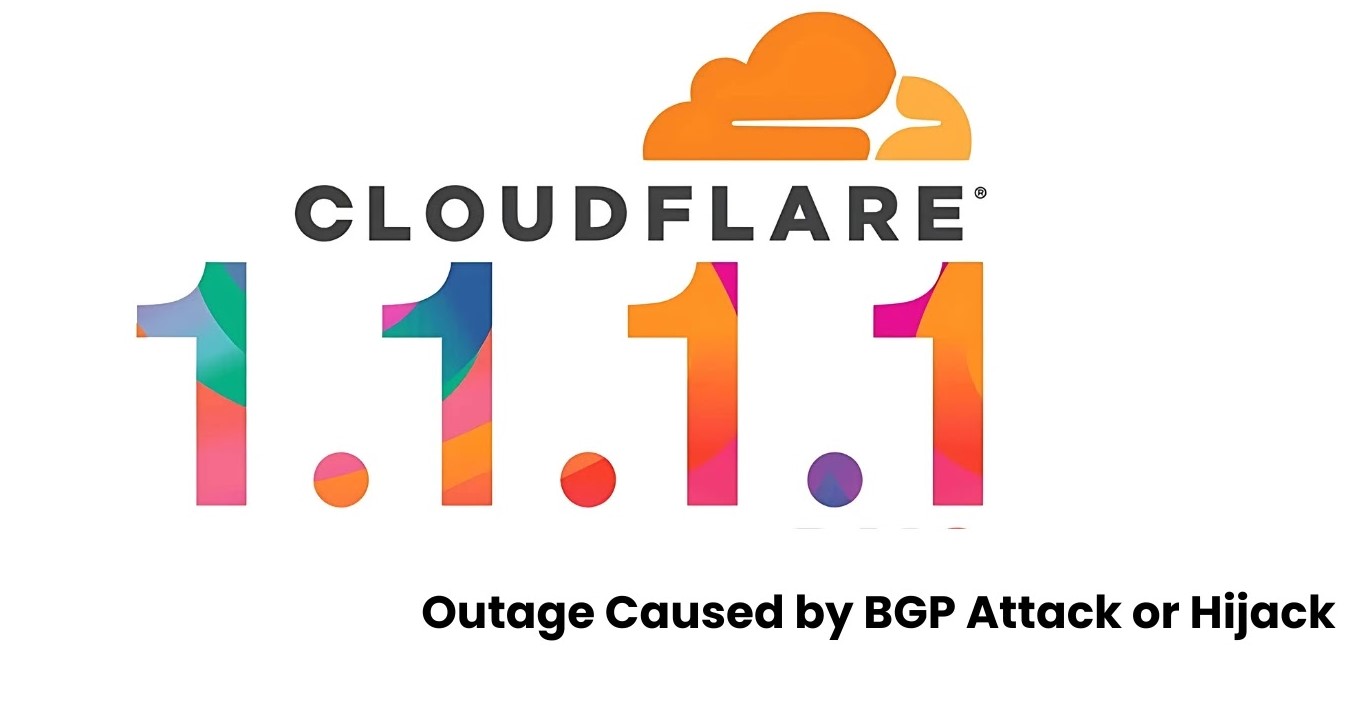
Cloudflare Confirms Recent 1.1.1.1 DNS Outage Caused by BGP Attack or Hijack
Unpacking the Cloudflare 1.1.1.1 DNS Outage: A Deep Dive into Internal Misconfiguration
On July 14, 2025, a significant incident rattled the digital world: Cloudflare’s widely trusted 1.1.1.1 DNS resolver service experienced a global outage. Affecting millions of users worldwide, this 62-minute disruption, occurring from 21:52 UTC to 22:54 UTC, initially sparked widespread speculation of a nefarious BGP attack. However, Cloudflare has since clarified the true cause, shifting the narrative from external malice to internal oversight. This analysis delves into the specifics of the outage, the technical implications, and the broader lessons for service reliability and cybersecurity.
The Outage in Detail: Dispelling BGP Attack Rumors
The immediate aftermath of the 1.1.1.1 DNS outage saw a flurry of discussions across cybersecurity forums and social media, with many pointing fingers at a Border Gateway Protocol (BGP) attack or hijack. BGP, the routing protocol that governs how data travels across the internet, is a frequent target for malicious actors seeking to redirect traffic for various purposes, from espionage to financial gain. The concern was understandable, given the critical role DNS plays in internet connectivity and the potential for widespread disruption from a successful BGP manipulation.
However, Cloudflare, a company renowned for its transparency and robust infrastructure, quickly moved to set the record straight. Their official statement confirmed that the outage was not the result of an external BGP attack. Instead, the root cause was an internal configuration error. While a coincidental BGP event did occur around the same time, Cloudflare unequivocally stated it was unrelated to the DNS resolver’s downtime.
Understanding DNS Resolvers and BGP
To fully grasp the implications of this incident, it’s essential to understand the underlying technologies:
- DNS Resolvers: The Domain Name System (DNS) is often referred to as the “phonebook of the internet.” When you type a website address like “example.com” into your browser, a DNS resolver translates that human-readable name into a machine-readable IP address (e.g., 192.0.2.1). Cloudflare’s 1.1.1.1 resolver is a popular choice due to its speed, privacy features, and resilience. An outage in such a critical service effectively renders a large segment of the internet unreachable for affected users.
- Border Gateway Protocol (BGP): BGP is the internet’s routing protocol. It determines the most efficient paths for data packets to travel between different autonomous systems (ASes) – large networks like internet service providers (ISPs) or major cloud providers. BGP “hijacks” occur when a malicious entity advertises ownership of IP address blocks they don’t control, effectively redirecting traffic through their network. While not the cause in this instance, BGP hijacks remain a significant concern for internet stability.
The Impact of the Outage
A 62-minute global outage of a fundamental internet service like Cloudflare’s 1.1.1.1 DNS resolver has far-reaching consequences:
- Widespread Connectivity Issues: Millions of users globally experienced difficulties accessing websites, online services, and applications that rely on DNS resolution. This included disruptions to everyday internet activities for both individuals and businesses.
- Service Degradation: Even for services that didn’t completely go offline, performance was severely degraded as systems struggled to resolve domain names.
- Economic Loss: For businesses heavily reliant on internet connectivity, even short outages can translate into significant financial losses due to lost productivity, missed sales, and reputational damage.
- Trust Erosion: While Cloudflare quickly clarified the cause, any major outage can momentarily erode user trust in critical internet infrastructure providers.
Lessons Learned for System Reliability
Cloudflare’s incident, though caused by an internal error rather than an attack, underscores several critical lessons for maintaining highly available systems:
- Robust Change Management: Implementing and rigorously adhering to stringent change management processes is paramount. Every configuration change, no matter how minor it seems, carries potential risks.
- Comprehensive Testing: Thorough testing in staging environments before deploying changes to production is essential. This includes unit testing, integration testing, and performance testing under realistic load conditions.
- Automated Rollbacks: The ability to quickly and automatically roll back problematic configurations is a lifesaver during outages. This minimizes downtime and restores service faster.
- Redundancy and Diversification: While Cloudflare’s infrastructure is highly redundant, the incident highlights the ongoing need for end-users and organizations to consider diversifying their DNS resolution strategies to avoid single points of failure.
- Visibility and Monitoring: Deep observability into system behavior, coupled with intelligent alerts, allows operations teams to detect anomalies and respond rapidly to incidents.
- Post-Mortem Analysis: Detailed and transparent post-mortems, like the one Cloudflare undoubtedly conducted, are crucial for learning from incidents and implementing preventative measures.
Conclusion: Internal Vigilance is Key
The Cloudflare 1.1.1.1 DNS outage on July 14, 2025, serves as a stark reminder that even the most robust and globally distributed systems are not immune to disruptions. While the initial fear centered on a BGP attack, the reality of an internal configuration error highlights a different, yet equally vital, aspect of cybersecurity and operational resilience: the critical importance of meticulous internal processes, rigorous testing, and comprehensive change management. For organizations and individual users alike, this event underscores the need for vigilance, not just against external threats, but also against the inherent complexities and potential pitfalls of managing highly intricate digital infrastructures. Building truly resilient systems demands continuous improvement, learning from every incident, and prioritizing operational excellence as much as threat prevention.





